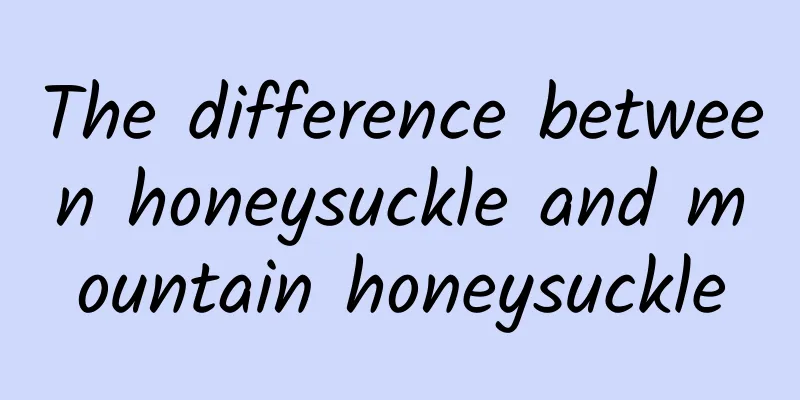The difference between honeysuckle and mountain honeysuckle

|
Honeysuckle tea and honeysuckle belong to two different categories in the national pharmacopoeia, which actually has strict biological basis; although the two can replace each other in some functions, due to the huge difference in their values, it is still necessary to make a summary here. Generally speaking, the differences between honeysuckle tea and honeysuckle tea are as follows. Different taste: There is a big difference in the taste of honeysuckle tea and mountain honeysuckle. The taste of honeysuckle tea is more fragrant and beautiful, while the taste of mountain honeysuckle is more calm. Difference in petals: Compared with honeysuckle, the flowers of honeysuckle are larger and the buds are rounder. In terms of the color of the petals, the color of the mountain honeysuckle is darker than that of the golden honeysuckle, and it is dark green and may have a hint of blue-purple. The difference of flower buds: Compared with honeysuckle tea, the flower buds of mountain honeysuckle have less fluff and feel harder to the touch. The buds of honeysuckle camellia are more hairy, soft and fuzzy to the touch, and very comfortable to the touch. Differences in leaves: The color of the leaves of Honeysuckle is relatively dark, especially the surface is dark green, there is no fuzz on the leaves, and they are relatively smooth. The leaves of honeysuckle tea are lighter in color. If you feel them carefully, you will feel some fuzz. You can compare the two plants together to distinguish them. Different effects: Honeysuckle tea is cold in nature, sweet and slightly sour. It has the effects of dispersing blood, relaxing muscles and activating blood circulation, clearing away heat and removing fire. It can be used to treat carbuncles, furuncles, erysipelas, wind-heat colds, febrile diseases and other symptoms. However, honeysuckle is cool in nature, and its effect is completely opposite to that of honeysuckle tea, and it cannot clear away heat and reduce fire. Different ingredients: Honeysuckle tea contains chlorogenic acid and luteolin, and according to the 2005 edition of the "Pharmacopoeia", the chlorogenic acid content must not be less than 1.5%, and the luteolin content must not be less than 0.10%. Honeysuckle also contains chlorogenic acid, and its content is higher than that in honeysuckle tea. |
<<: How much is a bottle of Ganoderma lucidum spore powder
>>: How to distinguish true and false red ginseng
Recommend
What are the functions and effects of chicken gizzard lining?
Chicken's gizzard lining is a natural Chinese...
Watching videos at double speed may be damaging your brain! Especially for this group of people →
Wait! Before you scroll down this article, stop h...
How to use oseltamivir, the "miracle drug" for influenza A, correctly?
Recently, influenza A virus infection has spread ...
A man born in the 1990s who dropped out of school and quit his job did scientific research for his hobby, and his results were published in Science
He has loved observing insects since he was a chi...
The efficacy and function of Bletilla striata
Bletilla striata can generally play the role of c...
Is it really good to eat Polygonum multiflorum for a long time?
Polygonum multiflorum is actually a relatively pr...
Dolphin: What just got into my head?
Dolphins are very intelligent and highly social a...
Aircraft piston engine
Aviation piston engines rely on the reciprocating...
Your headphones are about to be "disrupted" by AI: Just take a look and the whole world is filled with his voice
Modern life is noisy in most situations. If you d...
The efficacy and function of rice flower
The medical value of rice balls is beyond our ima...
"If a person sleeps for three hours, his life is as fragile as paper"? What are the three hours? These abnormalities may be the body's "call for help"...
Expert of this article: Zhao Wei, MD, associate c...
The efficacy and function of wild boar fat
The traditional Chinese medicine wild boar fat is...
The efficacy and function of Luanxi
As we all know, Luanxiong is a very common medici...
The efficacy and function of bamboo (rat) meat
Bamboo (rat) meat is a very familiar medicinal ma...
The efficacy and function of cat leg gu
Modern medical research believes that cat's l...

![The efficacy and function of flower anchor [picture]](/upload/images/67ca500e73491.webp)







